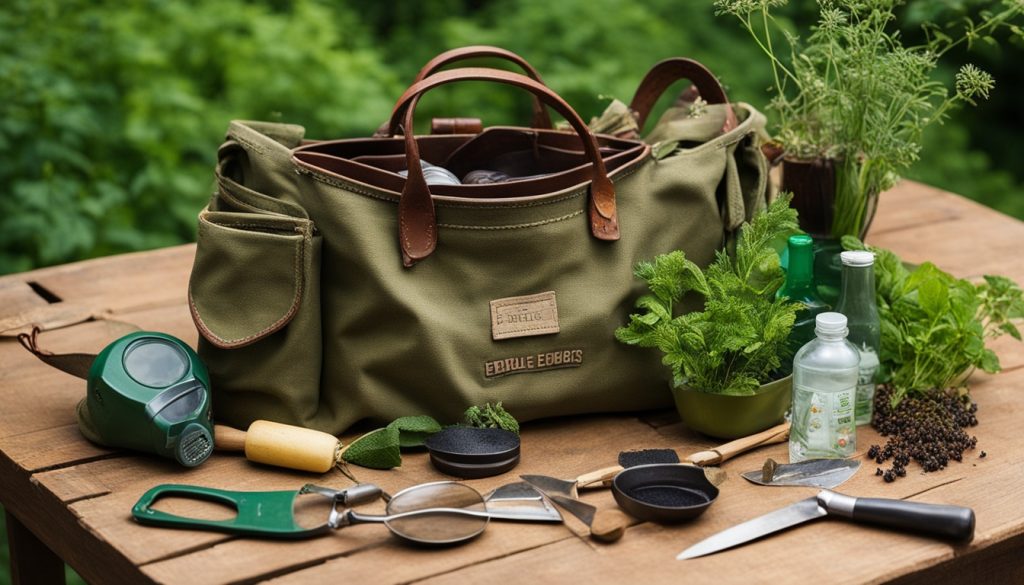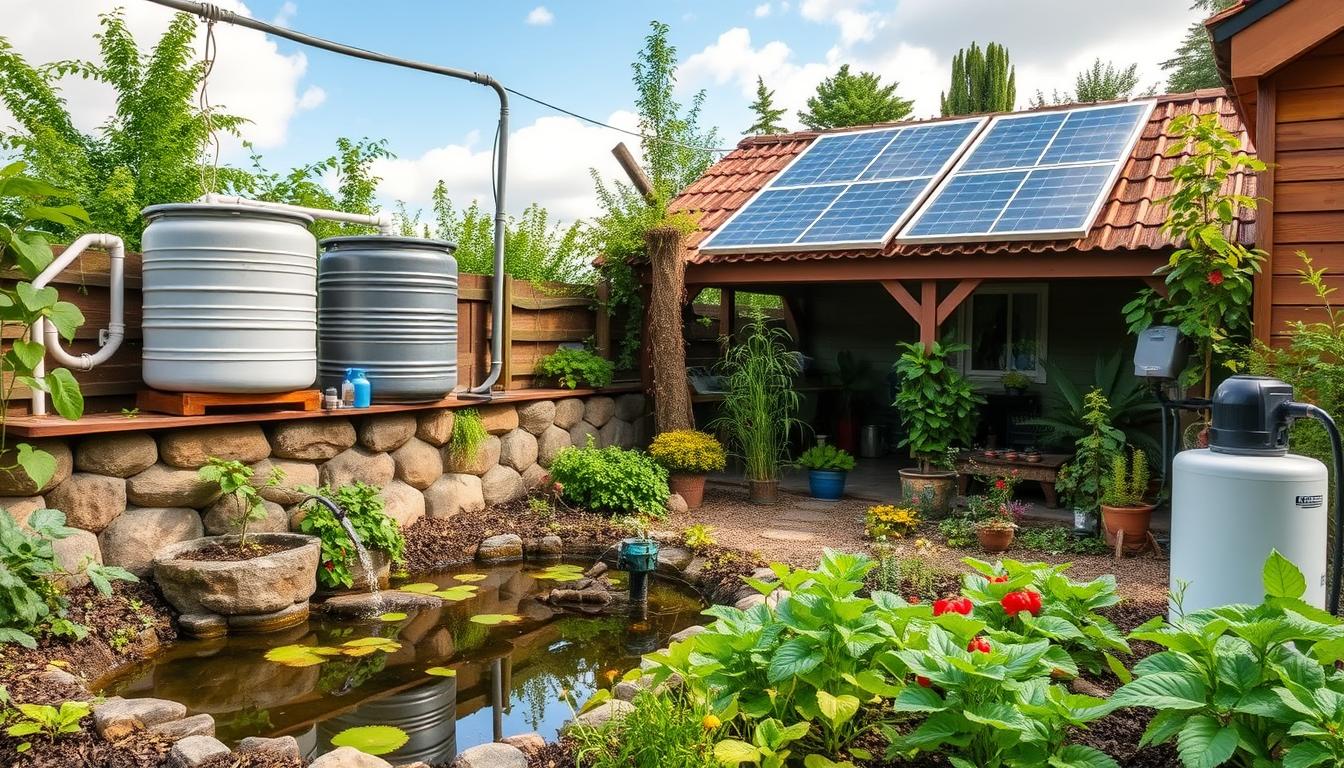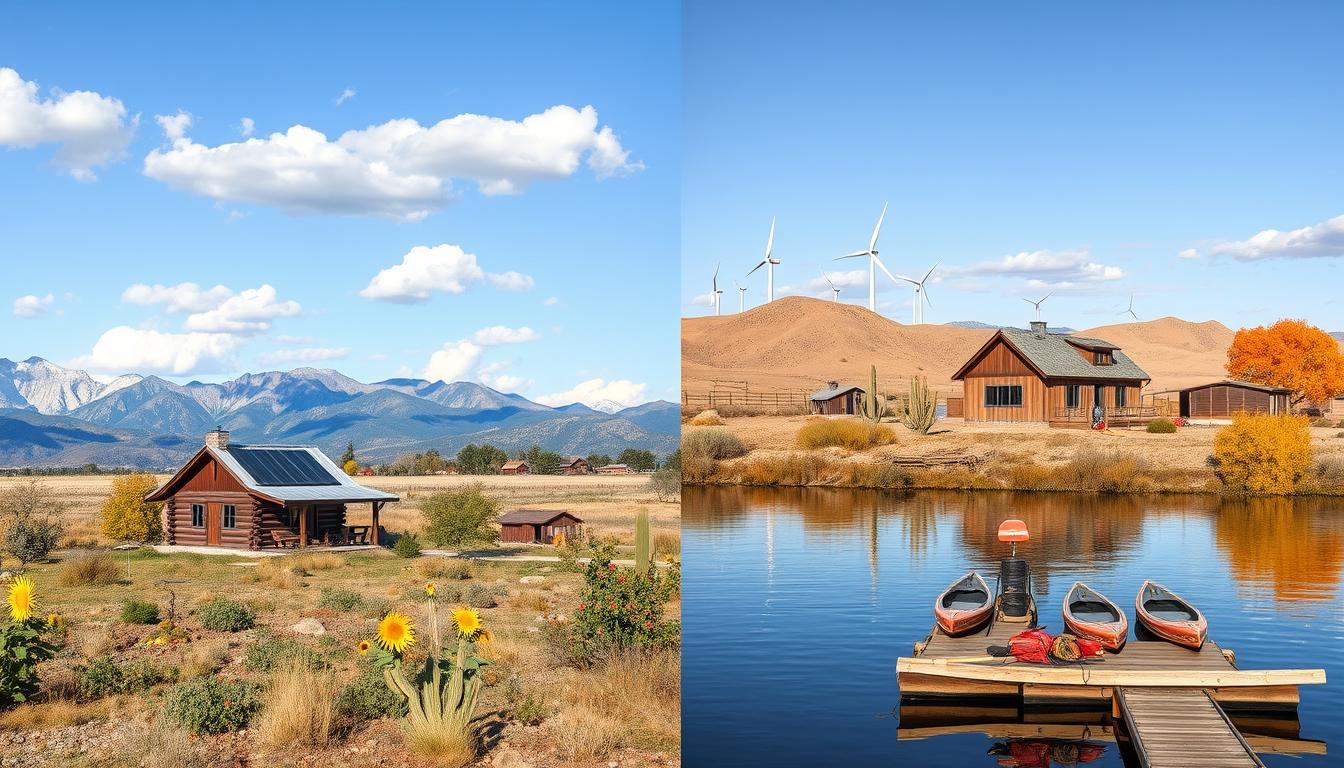Dive into the exciting world of wild edible plants and the art of foraging. This guide is perfect for anyone who loves the outdoors or nature. It will teach you how to find, pick, and use many wild plants safely. You’ll learn survival skills and connect more with nature.
Key Takeaways
- Discover the abundance of wild edible plants surrounding us in the natural world
- Learn practical foraging tips to safely identify and harvest wild edibles
- Explore the nutritional benefits and culinary potential of wild plants
- Develop a deeper appreciation for the interconnectedness of nature
- Enhance your outdoor survival and self-reliance skills
The Joy of Foraging for Wild Edible Plants
Foraging for wild edible plants is a deep and enriching experience. It lets you connect with nature, find its abundance, and learn about the nutritional value of wild plants. You’ll start a journey of discovery, learning to identify and harvest nutritious wild plants responsibly.
Connecting with Nature’s Bounty
Foraging is more than just picking food; it’s about immersing yourself in nature’s cycles. With each plant you find and collect, you’ll grow to appreciate nature’s balance and connections. It teaches you to slow down, observe, and connect deeply with the land, creating a strong nature connection.
Nutritional Benefits of Wild Edibles
The plants you find while wild foraging are often more nutritious than store-bought ones. They’re full of vitamins, minerals, and antioxidants that boost health. Adding these wild foods to your diet can be a simple way to get more nutrients and phytochemicals.
“Foraging is a way to reclaim our rightful place in the natural world. It’s about recognizing the abundance that surrounds us and learning to live in harmony with the land.” – Deborah Madison, author of “Foraged Flavors”
Foraging for wild edible plants is a journey that goes beyond just finding food. It’s a way to deepen your connection with nature and nourish your body with the natural world’s bounty.
Wild edible plants, foraging tips: Essential Guidelines
Foraging for wild edible plants connects you with nature in a special way. It’s important to know how to do it safely and correctly. We’ll cover the key steps for foraging guidelines, plant identification, and sustainable harvesting.
Proper Identification Techniques
First, learn how to identify wild edible plants. Use field guides or online resources to get to know them. Look at the leaves, stems, flowers, and the plant’s overall look. Use all your senses to make sure you know what it is.
Some plants can be harmful or look like they’re safe but aren’t. Always check your identification twice before eating any wild plant.
Sustainable Harvesting Practices
Be careful when foraging to make sure you don’t harm the plants or the environment. Only take a little bit of each plant. This way, there will still be plenty left for others. Also, respect the rules about where you can and can’t pick plants.
- Collect only what you need, leaving the rest for future growth and regeneration.
- Avoid harvesting rare or protected plant species.
- Be cautious of sensitive or fragile ecosystems, and leave them undisturbed.
By following these foraging guidelines and techniques for plant identification and sustainable harvesting, you can enjoy nature’s gifts. And you’ll help make sure there’s still plenty for others in the future.
Getting Started: Easy-to-Identify Wild Edibles
If you’re new to foraging, venturing into the wild to find edible plants might seem scary. But, there are many easy-to-spot wild edibles perfect for beginners. These plants are often found in your backyard, making them great for those starting out in easy to identify wild edibles and beginner foraging.
The dandelion is a well-known and versatile wild edible. You can eat the greens and flowers, and it’s full of nutrients. The plantain is another easy find, looking like a weed but with broad leaves perfect for salads or cooking like spinach.
Clover is a favorite among foragers, with small, sweet flowers and leaves. Violets, with their bright purple flowers, are not only pretty but also safe to eat. They add a delicate, floral taste to dishes.

These are just a few examples of easy to identify wild edibles found in yards and parks. Learning about these beginner-friendly plants lets you start foraging with confidence. You can connect with nature’s bounty right in your own community.
Foraging Safety and Responsible Practices
Foraging for wild edible plants is exciting but requires safety and responsible practices. It’s important to be careful and diligent to make the most of your time outdoors.
Avoiding Toxic Areas and Plants
When foraging, it’s crucial to stay away from areas with toxic plants. Don’t forage near busy roads, industrial sites, or places sprayed with pesticides. These can be dangerous to your health. It’s also key to know the difference between edible and non-edible plants to avoid eating something harmful.
Respecting Land Use and Property Rights
Foragers must think about land use and property rights. Always get permission before foraging on private or protected lands. This shows respect for the landowner and helps keep good relations with the community. Always leave the land as you found it to protect it for others.
“Foraging is a delicate balance of enjoying nature’s bounty while preserving its integrity for generations to come.”
Putting safety and responsible practices first lets you enjoy foraging fully. Remember, foraging is a privilege, not a right. We must take care of the land for the future.
Seasonal Foraging: Following Wild Edibles Throughout the Year
Foraging for wild edible plants is something you can do all year. Different plants come out during different seasons. Knowing when plants grow helps foragers plan and get food all year.
Seasonal foraging lets us connect with nature’s rhythm. We get to enjoy everything from spring greens to summer berries and fall roots. Each season has its own wild foods to find and eat.
To get the most from seasonal foraging, learn about local plants and when they grow. Use field guides, join local groups, and explore on your own. By watching the seasons, you can follow the wild edibles throughout the year. This way, you always have nature’s food to enjoy.
- Spring: Seek out tender greens, young shoots, and early-blooming flowers.
- Summer: Harvest juicy berries, crisp leafy greens, and lush herbs.
- Fall: Forage for nutrient-dense roots, nuts, and late-season fruits.
- Winter: Identify hardy greens, evergreen herbs, and wild mushrooms.
“Foraging is a dance with the seasons, a celebration of nature’s ever-changing tapestry of flavors and textures.”
By living with the seasons and following the seasonal foraging cycle, you connect more with nature. You also get to enjoy many wild edibles all year.
Building Your Foraging Toolkit
Starting a foraging journey means you need the right tools and resources. Having a good foraging toolkit is key to enjoying wild edible plants. This guide will show you what every forager should have.
Essential Field Guides and Resources
Being able to identify plants correctly is vital in foraging. Field guides are your go-to tools. Here are some top picks:
- Edible Wild Plants: A North American Field Guide by Thomas S. Elias and Peter A. Dykeman
- The USDA Forest Service Wildflowers and Plants website
- Mobile apps like iNaturalist and Wildflower Search for on-the-go plant identification
Joining Local Foraging Communities
Connecting with other foragers can open up new knowledge and chances. Look for local groups, meetups, or online forums. Here, you can learn from experts, share your finds, and find new places to forage. These groups are great for growing your foraging toolkit, finding field guides, and meeting foraging communities.
“The more you know, the more you’ll grow. Joining a foraging community is a game-changer for any aspiring wild edible enthusiast.”
With the right tools and a network of foragers, you’ll be ready to explore nature’s edible treasures.

Cooking and Preserving Wild Edible Bounty
After finding wild edible plants, the real fun starts. You can turn these plants into tasty and healthy meals. This part will give you tips and tricks for cooking and preserving wild edibles. You’ll learn how to make the most of your finds.
Embracing the Flavors of Wild Edibles
Wild edible plants have unique and exciting flavors. Wild watercress tastes peppery, while dandelion greens are sweet and earthy. Try different cooking ways like sautéing, steaming, or pickling to enhance their flavors.
Preserving the Bounty
It’s key to know how to keep your wild edible harvest fresh. Drying is great for saving herbs and greens. Pickling and fermenting are also good for keeping the taste and nutrients of your finds.
“Foraging and cooking with wild edibles is a truly immersive experience, connecting us to the natural cycles of the Earth and the abundance it provides.”
Learning to cook and preserve wild edibles lets you enjoy nature’s flavors all year. Share your finds with loved ones and let your culinary creativity grow.
Cultivating Wild Edibles in Your Garden
For those who love foraging and connecting with nature, growing wild edible plants in your garden is rewarding. It ensures a steady supply of nutritious and tasty plants. Plus, it helps protect threatened populations in their natural habitats.
Cultivating wild edibles needs some special knowledge, but it’s worth it. These plants have unique needs for growing well. You must know what they like for soil, sun, and water.
“Growing wild plants in my garden has been a game-changer. I now have a constant supply of delicious and nutrient-rich ingredients right at my fingertips.” – Samantha, avid forager and home gardener
By growing wild plants, you enjoy nature’s bounty and help protect these valuable species. Many wild edibles face threats like habitat loss and over-harvesting. By growing them, you help ensure they survive for future generations.
Incorporating Wild Edibles into Your Landscape
Adding wild edibles to your garden is easy. First, find out which species are native to your area and fit your garden’s conditions. Some great choices for home gardens include:
- Ramps (wild leeks)
- Stinging nettles
- Purslane
- Dandelion greens
- Elderberries
With careful planning and attention, these and other wild edibles can flourish in your garden. They’ll give you a steady supply of tasty and healthy ingredients all year.
Conclusion
This article has given a full look at wild edible plants and foraging. It showed the joy and benefits of connecting with nature. It also covered important rules for safe foraging.
Readers learned about easy-to-find wild edibles, foraging at different times of the year, and growing wild plants in their gardens. This has given them the knowledge and tools to start their own foraging adventures. It also helps them improve their outdoor survival skills.
Exploring edible plants in the wild showed how diverse and nutritious they can be. By learning how to identify and harvest them properly, readers can enjoy nature’s gifts responsibly. They can forage for seasonal treats or grow their own wild edible garden.
This article has helped people reconnect with the earth and become more self-sufficient. It’s about more than just finding food; it’s about living in harmony with nature.
We hope you’ll keep exploring the world of foraging, learning more, and sharing what you find with others. The world of wild edibles is always changing, offering new chances for growth, culinary discovery, and caring for the environment. Embrace the adventure, enjoy the tastes, and let nature lead you to a more sustainable and rewarding life.







